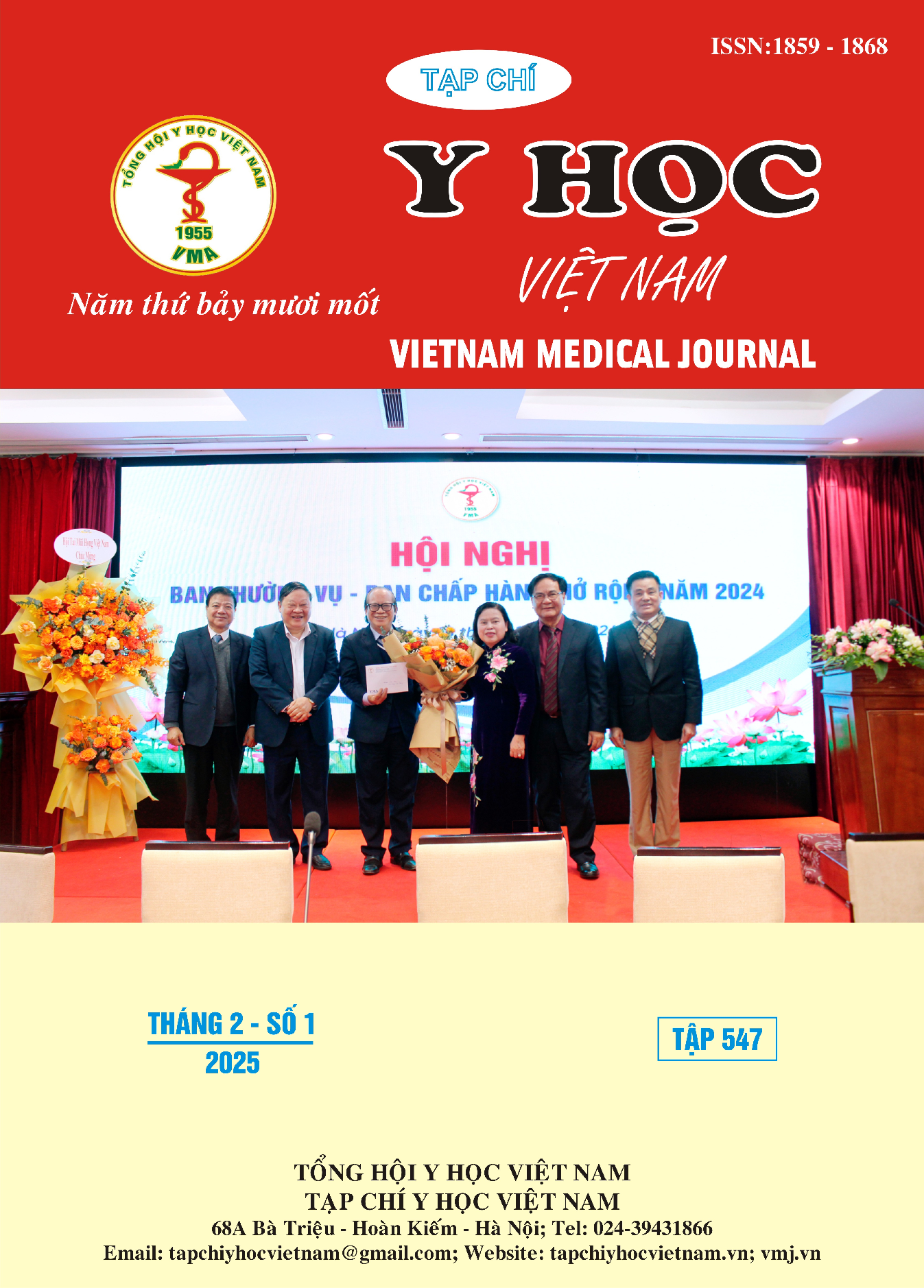THE CLINICAL, RADIOGRAPHIC AND HISTOLOGICAL FEATURES OF FIBRO- OSSEOUS LESIONS OF THE JAWS
Main Article Content
Abstract
Background: Fibro-osseous lesions of the jaws are benign lesions characterized by the replacement of normal bone tissue with fibrous connective tissue and mineralized substances. A comprehensive understanding of the clinical, radiographic, and histopathological features of these lesions is crucial for accurate diagnosis and effective treatment. Objective: To describe the clinical, radiographic, and histopathological characteristics of fibro-osseous lesions of the jaws. Materials and Methods: A prospective, cross-sectional descriptive study was conducted at the National Hospital of Odonto-Stomatology in Ho Chi Minh City. The study included patients diagnosed with fibro-osseous lesions of the jaw who received treatment between January 2023 and August 2024. Results: The study consisted of 22 patients with fibrous dysplasia (FD) and 11 patients with ossifying fibroma (OF). The mean age at onset of the FD group (17.2±8.1 years) was lower than that of the OF group (25.3±12.3 years) (p<0,05). All patients presented with facial swelling; with nasal deviation being more frequent in the FD group than in the OF group (p<0,05). Radiographically, ground-glass opacity was the most common finding in FD, with poorly defined borders from the surrounding bone. In contrast, OF lesions typically exhibited well-defined borders, with radiolucent rims being more prevalent in OF than in FD (p<0,05). Histological examination revealed osteoblastic rimming to be more commonly associated with OF, while FD exhibited a predominantly immature trabecular bone pattern. Cementum-like material was present in nearly all OF cases but absent in FD (p<0,05). Conclusion: The accurate diagnosis and management of fibro-osseous lesions of the jaws require the integration of clinical, radiographic, and histopathological findings.
Article Details
Keywords
fibro-osseous lesions, fibrous dysplasia, ossifying fibroma, clinical, radiography, histology
References
2. Davidova LA, Bhattacharyya I, Islam MN, Cohen DM, Fitzpatrick SG. An Analysis of Clinical and Histopathologic Features of Fibrous Dysplasia of the Jaws: A Series of 40 Cases and Review of Literature. Head Neck Pathol. 2019;14(2):353-361. doi:10.1007/s12105-019-01039-9
3. Lee J, FitzGibbon E, Chen Y, et al. Clinical guidelines for the management of craniofacial fibrous dysplasia. Orphanet J Rare Dis. 2012;7(1):S2. doi:10.1186/1750-1172-7-S1-S2
4. Neville BW, Damm DD, Allen CM, Chi AC. Oral and Maxillofacial Pathology. Elsevier Health Sciences; 2015.
5. Soyele O. Patterns of fibro-osseous lesions of the oral and maxillofacial region seen in a tertiary hospital at ile-ife, nigeria. Published online November 30, 2018.
6. Ojo MA, Omoregie OF, Altini M, Coleman H. A clinico-pathologic review of 56 cases of ossifying fibroma of the jaws with emphasis on the histomorphologic variations. Niger J Clin Pract. 2014;17(5):619-623. doi:10.4103/1119- 3077.141429
7. Shi RR, Li XF, Zhang R, Chen Y, Li TJ. GNAS mutational analysis in differentiating fibrous dysplasia and ossifying fibroma of the jaw. Mod Pathol. 2013;26(8):1023-1031. doi:10.1038/modpathol.2013.31
8. Wright JM, Vered M. Update from the 4th Edition of the World Health Organization Classification of Head and Neck Tumours: Odontogenic and Maxillofacial Bone Tumors. Head Neck Pathol. 2017;11(1):68-77. doi:10.1007/s12105-017-0794-1


